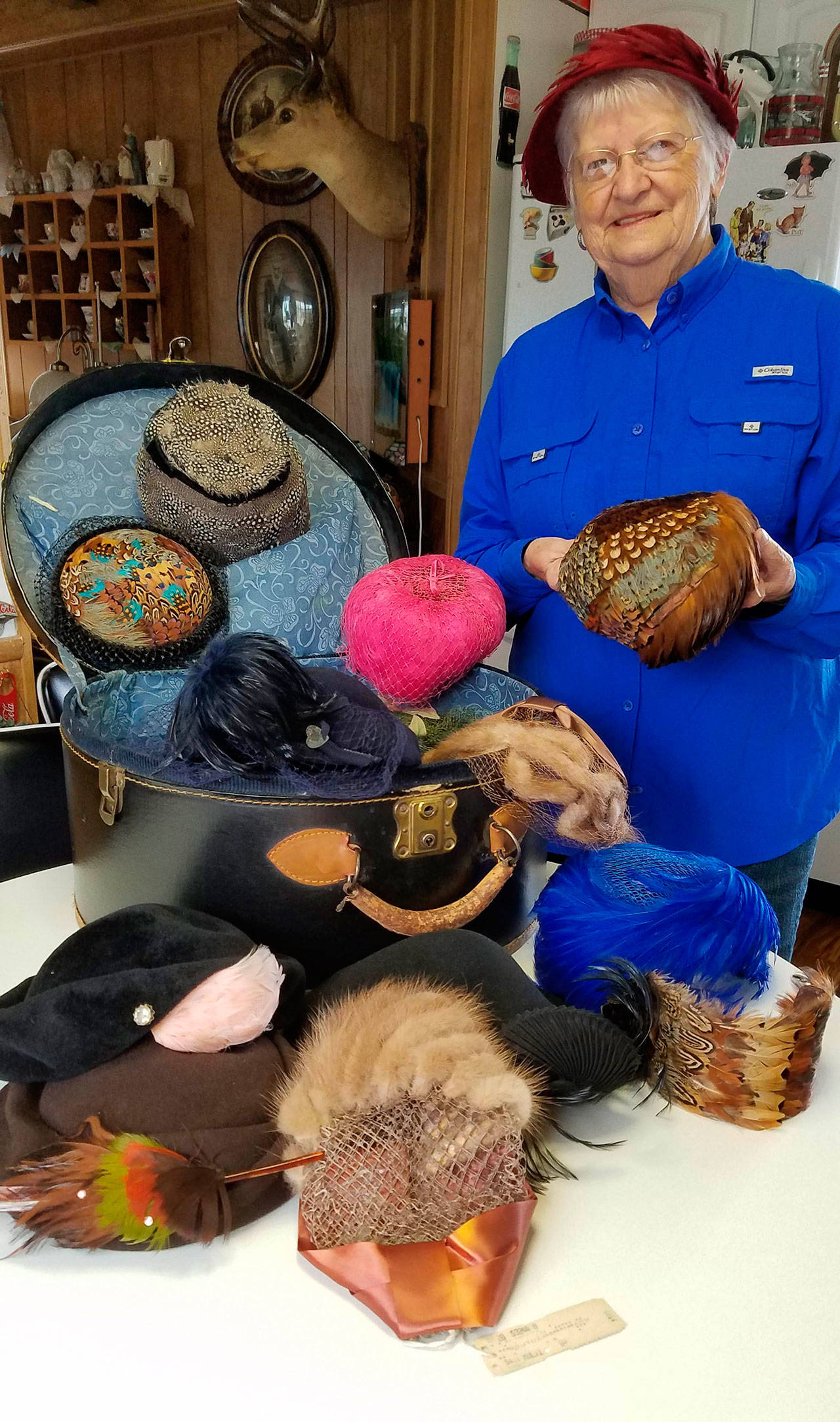In 1732, during American colonial history, the British passed the Hat Act restricting colonial manufacturing and exporting of hats in order to prevent colonial competition with English hat-makers.
It’s impossible to know how many hats have been manufactured — by competitors or otherwise — since. But one East Grays Harbor resident possesses more than most folks in a collection featuring nearly 100 vintage women’s hats, two more than a century old.
“Hang on to your hat. Hang on to your hope. And wind the clock, for tomorrow is another day,” wrote American author, E.B. White, known for his classics, “Charlotte’s Web” and “Stuart Little.”
White’s history began with his birth in 1899 in Mount Vernon, N.Y. That seems ages ago, but it’s not nearly far enough back for him to have had knowledge about the Hat Act from a personal perspective.
Rural Elma resident Opal Hanson’s personal history didn’t start till nearly three decades after White’s, but she likely has more first-hand knowledge of hats than he had.
A HAT SHOW
Last month, dozens of women gathered at Elma Alliance Church to practice their painting skills (or the lack of them, in my case). They were also invited to model many of Opal’s millinery treasures. The generous lady also brought a number of furs, gloves and purses that she allowed the ladies (including some of their young daughters) to try on.
The collection’s owner snapped pictures of the ladies, bright smiles highlighting the headwear, as well as the fun we were having.
In 1994, Hanson became the beneficiary of 85 of the hats when her great aunt, Cynith (Ray) Strawn, who grew up in Cedarville, near Oakville offered them to her.
But hats were significant to Opal long before she inherited her great-aunt’s. Her mother, Myrtle Barrett, bought a stylish tan straw hat with two feathers to wear when her brother, Ken Shelton, graduated from Washington State College in 1950.
The following year, Opal’s older sister, Cleo wore it for her Elma wedding to Danny Days. A year later, Opal wore it to an Easter service. Her future (now longtime) husband, Lyle Hanson, had asked, “If I buy you a corsage, will you go to church with me?” He did, and she did.
“That’s what got me kind of thinking about hats, and I started saving hats,” she says. (Ironically though, Opal noted, when she and Lyle married in 1954, the bride was “without a hat!”)
Sometime later, she purchased a hat, “and our pastor’s wife gave me a white one, she noted.” Then “someone else gave me one.” And the rest is hat history … sort of.
“In the 1960s, they stopped wearing them — and they got put on the shelf,” she said.
Along the way, though, Opal says, “I picked up some summer hats,” straw toppers that shielded face from the sun.
HAT HISTORY ON
In 1994, the Hansons took Opal’s mother to visit Cynith, and the two spent a week together while Opal and Lyle visited his cousin in Los Angeles.
When Lyle and Opal — who recalls she was the only relative “really interested” in Cynith’s hats” — returned to pick up Opal’s mom, Cynith told her, “Being-s you’re on your way home now, you take the hats and put them with yours.”
“She had them all boxed up and ready to go,” Opal recalls. “I couldn’t believe it.”
Some of the hats came with another delightful piece of serendipity: The round traveling case (suitcase) her maternal great-grandmother, Myrtle Ray, once owned, still holds a number of Cynith’s feather-festooned hats.
Two of the collection’s hats, one a soft pink, the other olive green, are western felt hats with gold-colored rope bands.
“When Auntie gave them to me, she said, ‘now honey, these are over 100.’ ” (They’re also the only ones that came with a story, Opal says.)
Her great-aunt told her a cousin had worn them with matching vests, chaps and cowboy boots, to rodeos and parades, Opal said.
She also has two dark-colored fur hats, one of which had belonged to her paternal grandmother, Maggie Barrett, and the other to Myrtle Ray.
Cynith was 100 when she died in 2011. Just two weeks earlier, she had told another niece to pack up the fur coats, mink and black fox stoles and a muff she’d also collected and send them to Opal.
“It was a total surprise,” Opal recalled.
The first time she ever “got my hats out to show anybody,” Opal said, was at a mother-daughter celebration in 1999 at the same church where we thoroughly enjoyed them last May.
We’re hoping it won’t be that long before the next time.
To reach columnist Tommi Halvorsen Gatlin, send an email to rhoda1946@yahoo.com.



